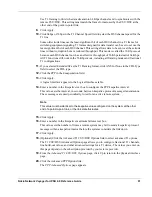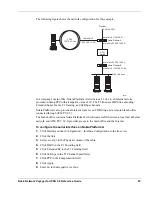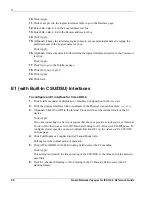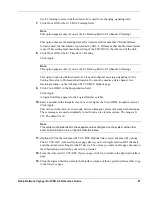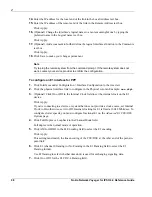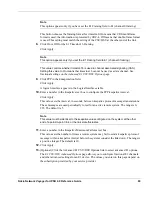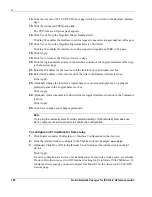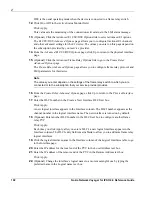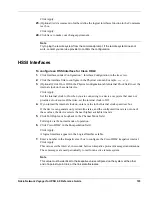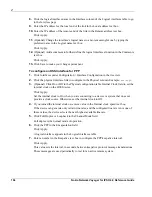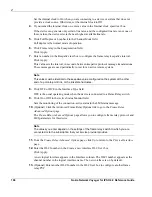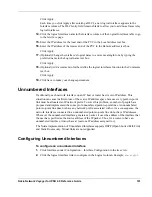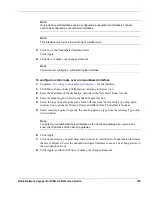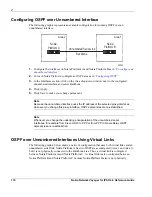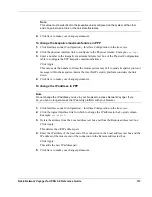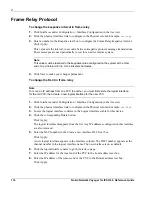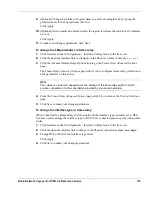
2
102
Nokia Network Voyager for IPSO 4.0 Reference Guide
DTE is the usual operating mode when the device is connected to a frame relay switch.
12.
Click On or Off in the Active Status Monitor field.
Click Apply.
This value sets the monitoring of the connection-active status in the LMI status message.
13.
(Optional) Click the Advanced E1 CSU/DSU Options link to select advanced E1 options.
The
E1 CSU/DSU Advanced Options
page allows you to configure fractional E1 channels
and other advanced settings for the E1 device. The values you enter on this page depend on
the subscription provided by your service provider.
14.
From the
Advanced E1 CSU/DSU Options
page, click Up to return to the physical interface
page.
15.
(Optional) Click the Advanced Frame Relay Options link to go to the
Frame Relay
Advanced Options
page.
The
Frame Relay Advanced Options
page allows you to configure frame relay protocol and
LMI parameters for this device.
Note
The values you enter depend on the settings of the frame relay switch to which you are
connected or to the subscription that your service provider provides.
16.
From the
Frame Relay Advanced Options
page, click Up to return to the
Physical Interface
page.
17.
Enter the DLCI number in the Create a New Interface DLCI text box.
Click Apply.
A new logical interface appears in the Interface column. The DLCI number appears as the
channel number in the logical interface name. The new interface is turned on by default.
18.
(Optional) Enter another DLCI number in the DLCI text box to configure another frame
relay PVC.
Click Apply.
Each time you click Apply after you enter a DLCI, a new logical interface appears in the
Interface column. The DLCI entry field remains blank to allow you to add more frame relay
logical interfaces.
19.
Click the logical interface name in the Interface column of the Logical Interfaces table to go
to the Interface page.
20.
Enter the IP address for the local end of the PVC in the Local Address text box.
21.
Enter the IP address of the remote end of the PVC in the Remote Address text box.
Click Apply.
22.
(Optional) Change the interface’s logical name to a more meaningful one by typing the
preferred name in the Logical name text box.
Summary of Contents for IPSO 4.0
Page 4: ...4 Nokia Network Voyager for IPSO 4 0 Reference Guide ...
Page 182: ...3 182 Nokia Network Voyager for IPSO 4 0 Reference Guide ...
Page 206: ...4 206 Nokia Network Voyager for IPSO 4 0 Reference Guide ...
Page 248: ...5 248 Nokia Network Voyager for IPSO 4 0 Reference Guide ...
Page 266: ...6 266 Nokia Network Voyager for IPSO 4 0 Reference Guide ...
Page 286: ...7 286 Nokia Network Voyager for IPSO 4 0 Reference Guide ...
Page 350: ...8 350 Nokia Network Voyager for IPSO 4 0 Reference Guide ...
Page 478: ...11 478 Nokia Network Voyager for IPSO 4 0 Reference Guide ...




